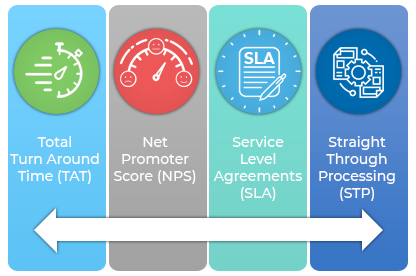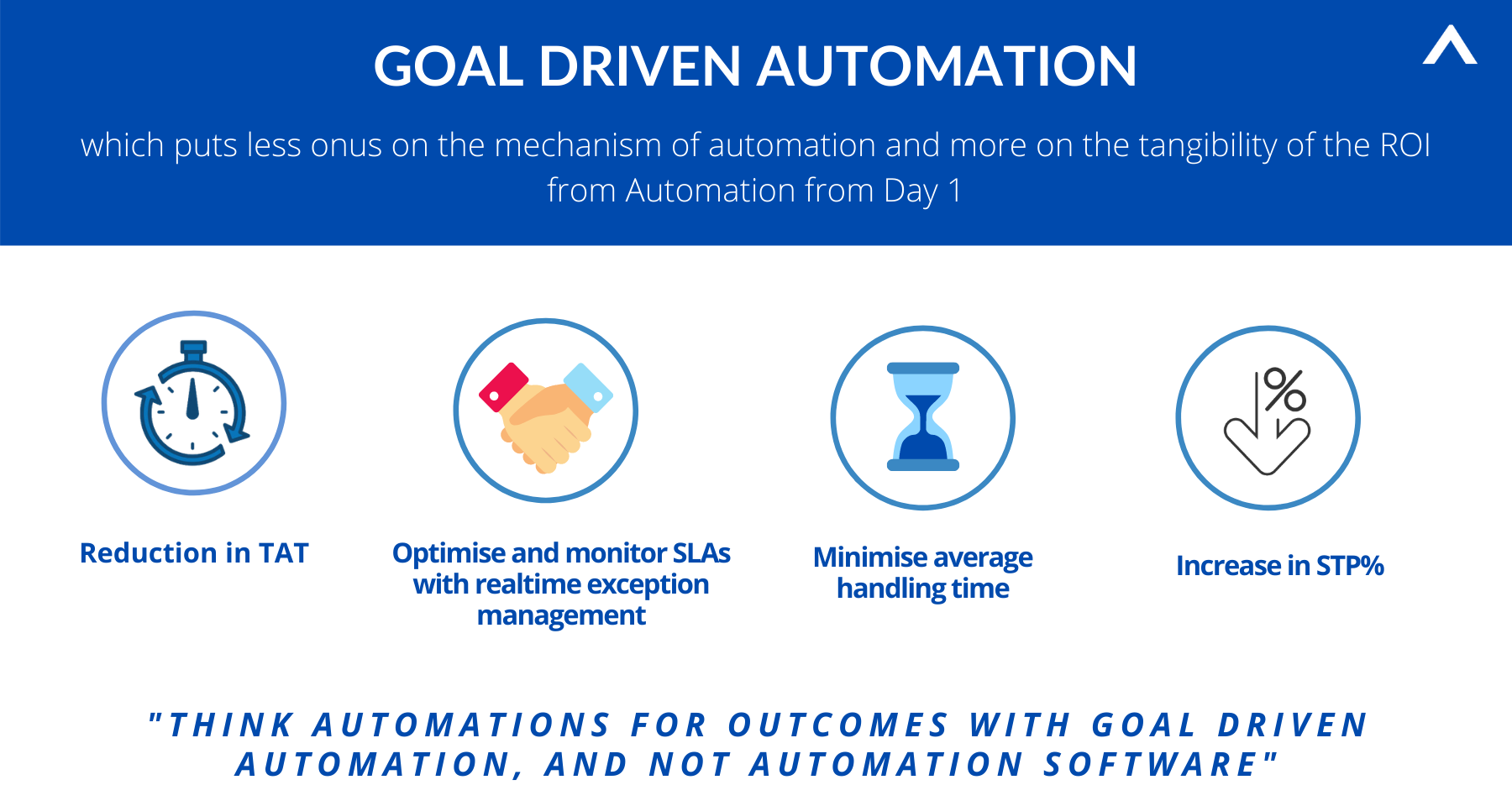In a highly decentralized customer centric digital world, automation should be treated as a commodity and not a feature of automation software.
Outcomes are the IP of the automation world instead of code and software.
Business Process Automation (BPA), by definition, is the process of using technology to execute business tasks which are repetitive in nature or are complex to perform. The primary purpose of BPA is standardization and visibility of processes which in turn lead to optimization and or innovation, adding to the top-line as well as bottom-line of the organisation.
The various flavors of automation namely Business Process Automation, Intelligent Process Automation, Robotic Process Automation, Conversational Automation, etc. target a similar set of use cases and outcomes with the differences primarily in the methods, tools and technology used. The end outcome expected of the different variants of automation from a business perspective is similar and measured through business metrics such as Total Turn Around Time (TAT), Average Handling Time (AHT), First Response Time (FRT), Net Promoter Score (NPS), Service Level Agreements (SLA), Straight Through Processing (STP), etc.
Process automation projects have generally tended to take an inside out approach wherein the business functions are the principal sponsor of the outcome but the primary driver behind the implementation is a role played by the IT teams.
A typical digital transformation project runs horizontally within an organisation and requires humongous efforts in terms of upfront investment, project management, cross functional coordination, business continuity and solutioning acumen to reach a stage which provides tangible benefits post implementation. These kinds of projects typically run into years before any viable outcome can be expected to be measured from them.
The extremely fluid nature of the digital economy makes it a complex task to map an existing business process to be implemented through legacy enterprise platforms to the real time, on demand customer centric world.
Cloud and digital technologies are now providing viable alternatives in this largely enterprise space.
With maturing technology and the advent of the digital age, the imperative is real time resolution requirements across the value chain. Velocity and volume of incoming and outgoing events coupled with intense business competition have acted as a strong motivator for businesses to consider vertical automation within organisations with a business outcome and business function combination driving automation.
The strategy can be explained through a Goal Driven Automation model which puts less onus on the mechanism of automation and more on the tangibility of the ROI from Automation from Day 1.
Goal Driven Automation take less time and effort to implement due to their focused nature and the ability to choose between various available technologies to maximize the outcome. These solutions proxy out the tools and technologies behind an API or the User Interaction Interface and are built with a micro-services approach to target unitary implementations. Having absorbed the complexity of the tools required for performing the automation these kinds of platforms provide an alternative way to organisations to target specific goals while leaving the choice of appropriate tools and technologies required for meeting those goals to the platform.
Typical goals for automation include reduction in TAT, optimize and monitor SLAs with real time exception management, reduce FRT, enhance NPS, minimize AHT, increase STP percentage, etc. These goals have a direct monetary relation with the top-line and or bottom-line for the organisation and the business sponsors now have direct visibility on the ROI vis-à-vis the investment in automation.
The ever-growing cloud and API economy makes distribution and scaling of such targeted solutions relatively much faster for businesses allowing them to tackle specific areas of interest, incrementally with high velocity as opposed to a big-ticket upfront investment in legacy enterprise BPA platforms.
Called out outcomes for automation tied-in with the business metrics help in having a real time view on the benefits obtained from Day 1 of automation.
Such goal driven automation platforms have capabilities to embed intelligence within the platform and excel in areas of recommendation, execution, and reporting. A self-learning platform basis the goals, use case and awareness of the metrics associated with the tools and services used in conjunction with results, in context of specific goals start recommending best fit automation recipes through its knowledge base.
The execution engines which are targeted towards optimization of goals make use of the inbuilt intelligence layers to continuously find the best paths, identify bottlenecks and recommend alternate paths for adoption with an aim to maximize the goal.
This is an outside-in approach to automation where the primary driving factors are the business metrics and outcomes with the automation platform playing the role of providing the right tool kit for the purpose.
ML/AI algorithms play their part not as standalone components but by their embedded nature, transforming the platform into an intelligent platform automating intelligence on demand and on scale.
It boils down to commodification of automation and thinking of it as a commodity to invest in, rather than traditionally as automation software with all the complexity around licenses and infrastructure. For each goal, budget for X volumes of automation can be set aside and tracked in real time for ROI.
Think automation for outcomes with Goal Driven Automation, and not automation software.



